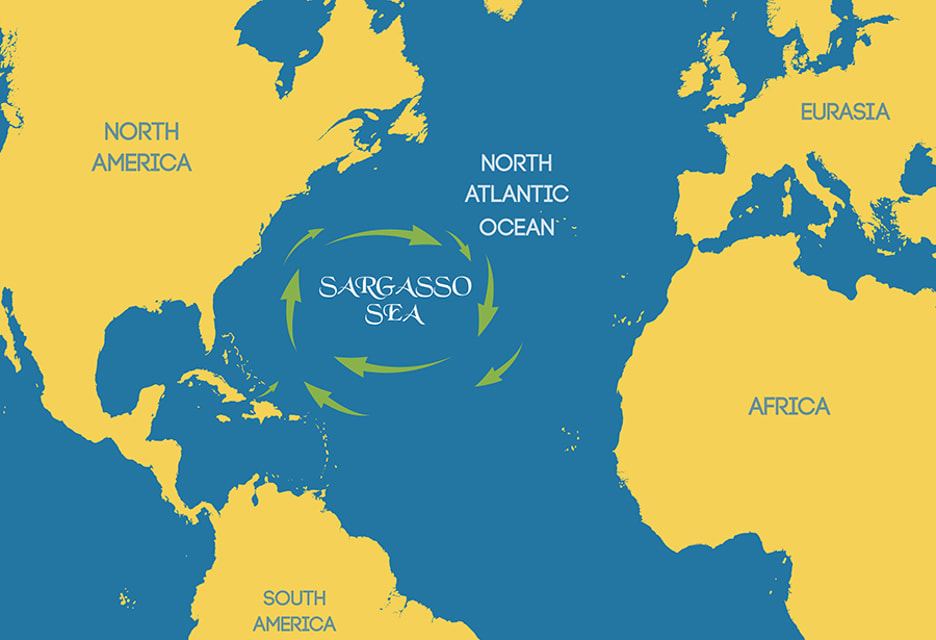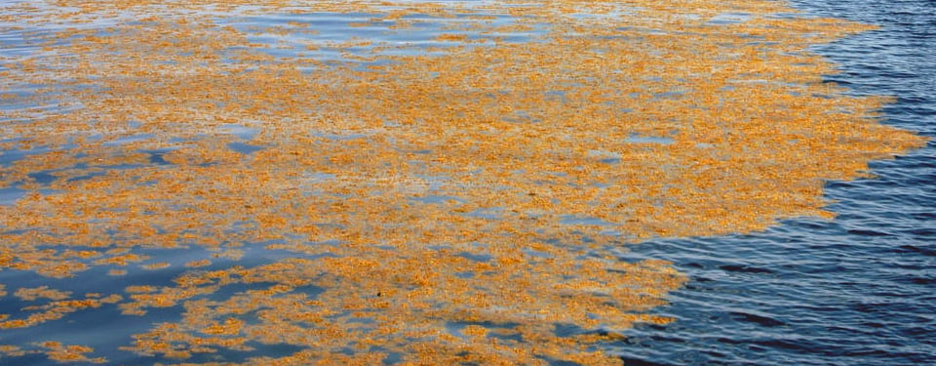|
Blog Post By: Aidan, Sea Turtle Intern
Newly hatched loggerheads swim continuously for several days upon entering the ocean. Once out of coastal waters, strong currents from the North Atlantic Subtropical Gyre carry hatchlings out into the ocean in a clockwise direction. The majority of hatchlings leave the strong currents and find themselves in a little-known area called the Sargasso Sea. This unique marine ecosystem serves as habitat for North Atlantic loggerheads for up to twelve years of their lives The Sargasso Sea is characterized by the dominance of two species of Sargassum seaweed (S. natans & S. fluitans) which live their entire lives floating in the open ocean. Large mats of vegetation are spread out in clumps throughout the Sargasso Sea making it appear like a floating forest in some parts. This ecosystem holds an incredible diversity of species including ten endemic species and many other fish and invertebrates living within sargassum. The shelter provided by sargassum makes it a suitable spot for fish to spawn and live in the earlier stages of their lives. These attributes make this area an ideal spot for loggerhead hatchlings to live unnoticed. In fact, they can hide so well, that this behavior was not even known to science until recently. Young loggerheads have plenty of food available to them in the Sargasso Sea. During this stage of life, they are omnivorous and feast on crustaceans, mollusks, jellyfish, and vegetation. These young turtles are provided with ideal shelter in sargassum mats that allow them to remain unseen to most predators. This shelter also allows them to save energy that would be required to swim against strong currents present in the open ocean. Newer research suggests that temperature regulation is another advantage to living among sargassum. The warmth absorbed by the seaweed improves the metabolism of hatchlings allowing them to forage and grow faster. Once juveniles have reached a sufficient size as to be unpalatable to most predators, they venture beyond the protection of the Sargasso Sea. They will then move to foraging grounds in nearshore waters where they will continue to grow until reaching maturity.
0 Comments
Leave a Reply. |
Leah SchwartzentruberSea Turtle Biologist Archives
June 2024
|


 RSS Feed
RSS Feed